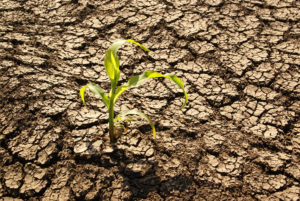In the western United States, we are all too familiar with drought. What we love the most about this area is the

tempered, low to no humidity climate that we live with. It can be very comfortable. But that same climate can easily fall into the zero-moisture zone. With only .5 an inch of rain and no snow in southwest Kansas since October, it seems we are sliding right back into the drought we thought we left behind last summer.
Dryer conditions cause difficulty with growing crops, including forages like hay. Without local hay products farmers and ranchers will be forced to look elsewhere to gather their product for immediate use, and especially to cover their needs for the following winter months. This can put quite a wrench in the hay market, driving prices higher as demand for the supply gets tighter throughout the western U.S.
What is A Drought?
Droughts are a funny thing though, what is considered a drought in Ohio that receives an average annual rainfall of 62.45 inches will be much different than the panhandle of Texas that receives an average annual rainfall of 18 inches. It takes a lot less missed storms in the panhandle to cause a drought than it does in Louisiana. However, no matter where you are located, drought is considered to be a prolonged period of abnormally low to no rainfall causing a noticeable shortage of water.
It is imperative when forecasting your future needs to always prepare for a not so rainy day. If you live in an area  prone to droughts such as the Panhandle and other areas of the western U.S., you can manage and prepare for these conditions on a regular basis. A few ways to do so are planting more drought hardy crop varieties, implementing water conservation plans, and securing ways to purchase feed products before things have a chance to “head south.”
prone to droughts such as the Panhandle and other areas of the western U.S., you can manage and prepare for these conditions on a regular basis. A few ways to do so are planting more drought hardy crop varieties, implementing water conservation plans, and securing ways to purchase feed products before things have a chance to “head south.”
Securing Your Hay Needs During Drought
Securing your hay needs for today and six months from now has never been easier. Allhay.com sources hay from all over the United States in all types and nutrition levels; we even put together THIS great post showing you how to inspect your hay before you accept it to make sure it meets the requirements you need. When using our website, you have the opportunity to sort through hundreds of listings until you find the ones that work for you. It has never been safer to purchase online either; this post HERE will tell you all about the measures we have taken to protect the investment you are making into your feed products.
For more information consider contacting an Agribusiness Consultant.
Don’t let your operation take the hit it did during the last drought. Use sources like All Hay to provide for your animals even when your local weather has other plans.